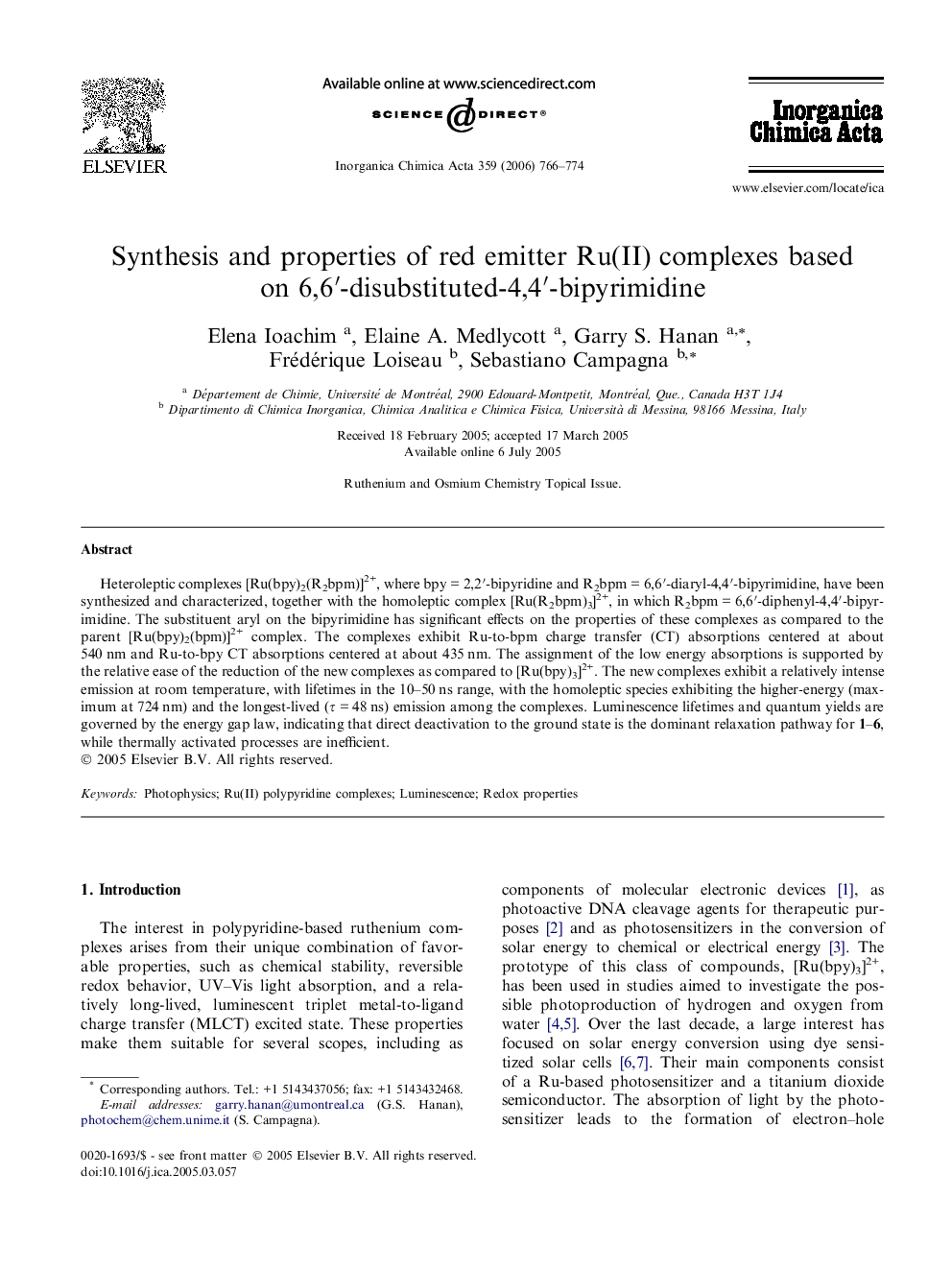| Article ID | Journal | Published Year | Pages | File Type |
|---|---|---|---|---|
| 1310168 | Inorganica Chimica Acta | 2006 | 9 Pages |
Heteroleptic complexes [Ru(bpy)2(R2bpm)]2+, where bpy = 2,2′-bipyridine and R2bpm = 6,6′-diaryl-4,4′-bipyrimidine, have been synthesized and characterized, together with the homoleptic complex [Ru(R2bpm)3]2+, in which R2bpm = 6,6′-diphenyl-4,4′-bipyrimidine. The substituent aryl on the bipyrimidine has significant effects on the properties of these complexes as compared to the parent [Ru(bpy)2(bpm)]2+ complex. The complexes exhibit Ru-to-bpm charge transfer (CT) absorptions centered at about 540 nm and Ru-to-bpy CT absorptions centered at about 435 nm. The assignment of the low energy absorptions is supported by the relative ease of the reduction of the new complexes as compared to [Ru(bpy)3]2+. The new complexes exhibit a relatively intense emission at room temperature, with lifetimes in the 10–50 ns range, with the homoleptic species exhibiting the higher-energy (maximum at 724 nm) and the longest-lived (τ = 48 ns) emission among the complexes. Luminescence lifetimes and quantum yields are governed by the energy gap law, indicating that direct deactivation to the ground state is the dominant relaxation pathway for 1–6, while thermally activated processes are inefficient.
Graphical abstractA novel family of ruthenium (II) polypyridine complexes with interesting absorption and emission characteristics was developed. Acceptor ligands based on 6,6′-disubstituted 4,4′-bipyrimidines were used to fine tune the photophysical and redox properties of the complexes.Figure optionsDownload full-size imageDownload as PowerPoint slide
